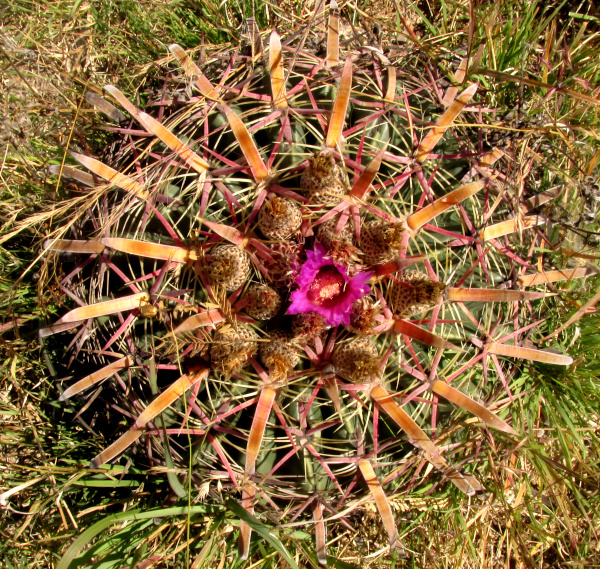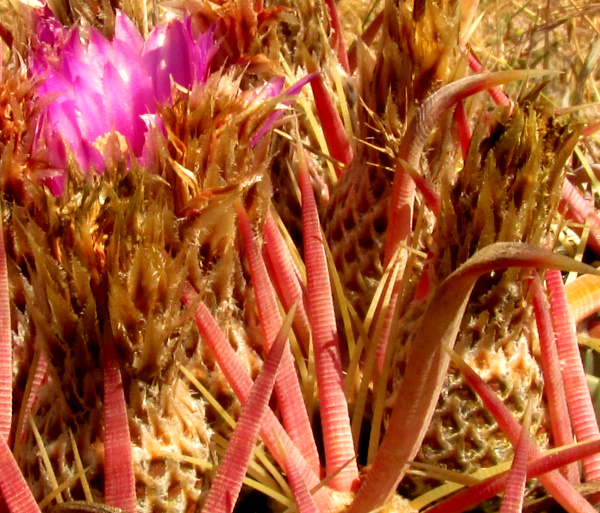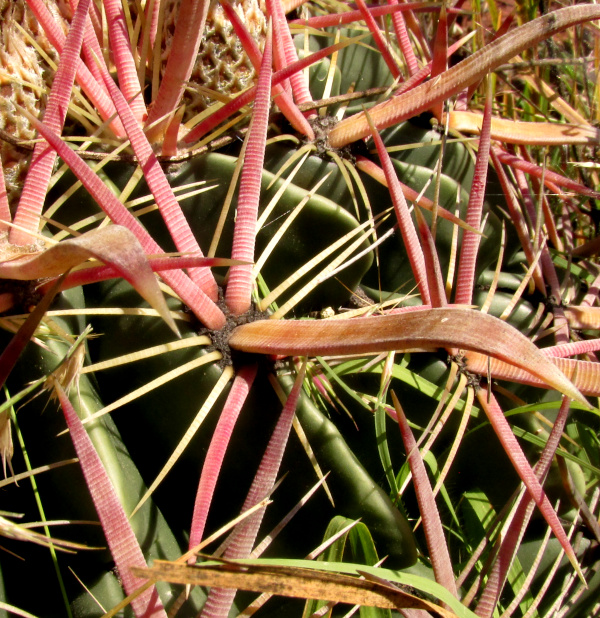Excerpts from Jim Conrad's
Naturalist Newsletter
entry from November 14, 2021, issued from near Tequisquiapan, elevation about 1,900m (6200 ft), ~N20.57°, ~ W99.89°, Querétaro state, MÉXICO
DEVIL'S TONGUE BARREL CACTUS
Nowadays, toward the end of the not-so-rainy rainy season, a few of the nice diversity of cactus species in this area are fruiting, but I can find only one individual plant of one species flowering, with one flower, and that's shown below:

The individual shown is maybe a little larger than a basketball. It's the largest I've found, though there were numerous smaller individuals. Apparently only a few of this species remain of an earlier abundance, after many years of clearing for cattle ranching. The plants found now mostly cluster in hard-to-get-to spots, where the local bedrock of consolidated volcanic tuff and piles of rhyolite and scoria rocks are heaped. In our general region, known as the Bajío, 28 cactus genera are to be found, and the genera usually are represented by several species, often endemic just to Mexico, so I knew to photograph our find's main identification features. A close-up of the flower is shown below:

Among the barrel cacti, often you need to know whether the flowers' ovaries, and the eventual fruits, bear spines. The cactus's ovaries bore no spines, though they were covered with pointy scales, as shown below:

Maybe the most important feature for identification, though, is the thorn arrangement. This species spine clusters consisted of 13 or so "radial spines," and 5 or so "central spines," of which a center one was larger than the rest, and considerably flattened along its upper surface, with the tip strongly curved downward, probably the "Devil's tongue" itself, as shown below:

This turned out to be the Devil's Tongue Barrel Cactus, FEROCACTUS LATISPINUS ssp LATISPINUS. It's endemic just to Mexico, occurring fairly commonly in the central and southern areas between 600 and 2,600 meters. Three subspecies are recognized, and ours is the "typical" one, subspecies latispinus.
Despite the species' limited distribution, it's considered one of the most common cactus species in collections and succulent gardens. Probably the main reason it's such a popular species is that it's a very handsome cactus. Another reason is that it does better under cultivation than many species, especially because it can tolerate moderately freezing temperatures.